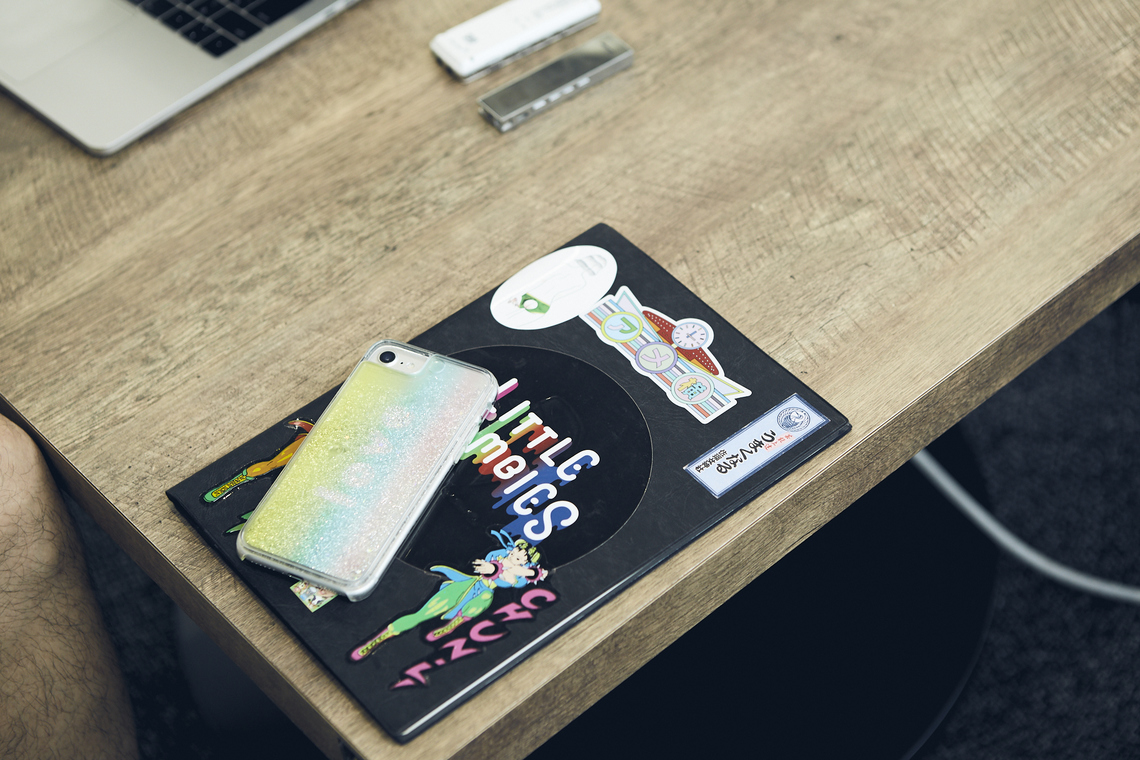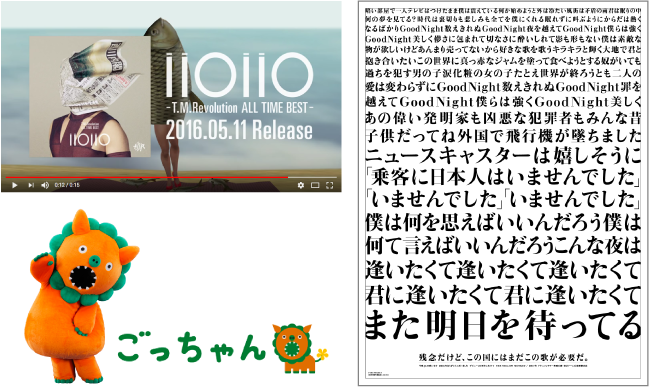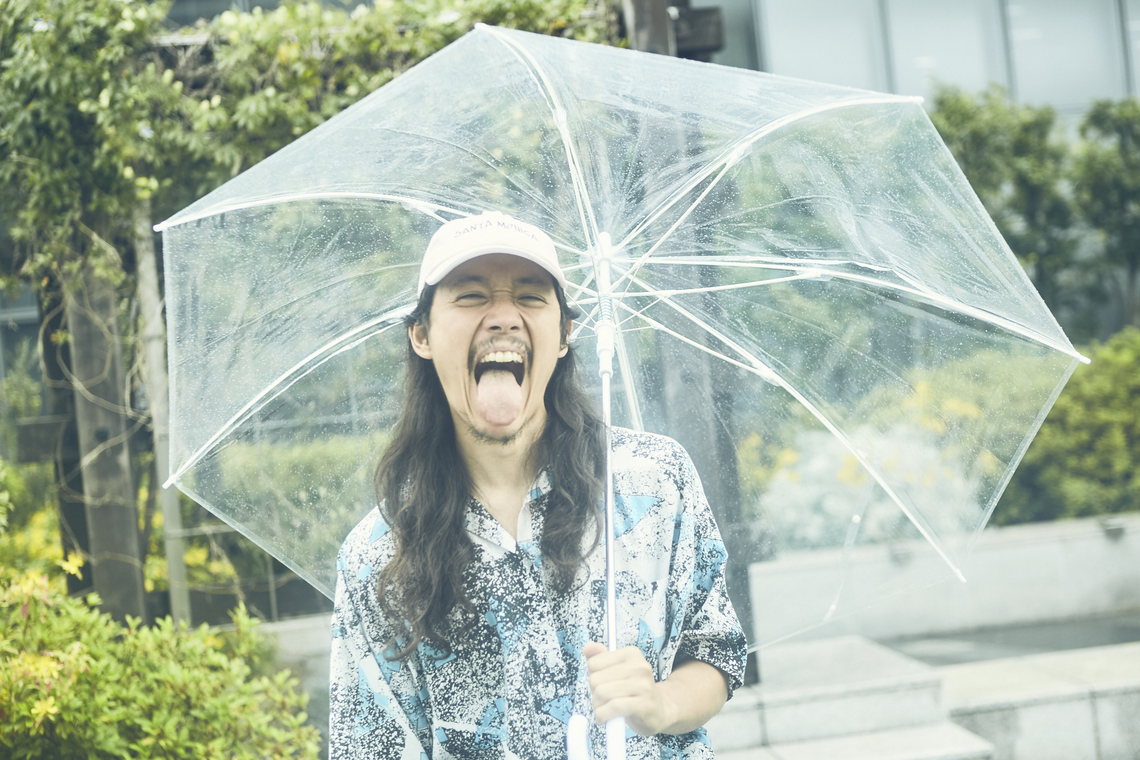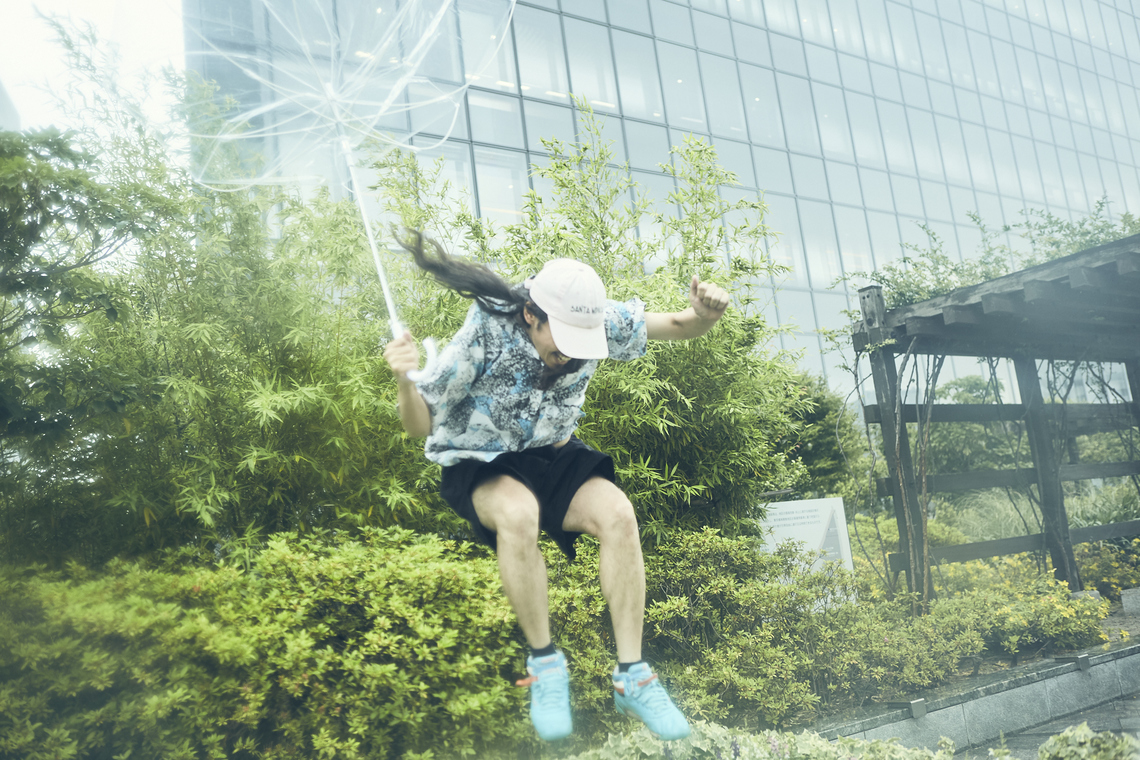A serialized interview series featuring Dentsu Inc. creators who transcend conventional advertising boundaries.
The first installment features Akira Nagahisa (Content Business & Design Center), who transitioned from sales to creative work and now creates various projects as a film director.
A Representative Work Born from a Single Line on Yahoo! News
── Mr. Nagahisa, you're a Dentsu Inc. employee yet also active as a film director. What kind of work do you typically do?
After winning the Grand Jury Prize at the 2017 Sundance Film Festival* for "And So We Put Goldfish in the Pool," I'm now working on feature films as a company employee.
Before shooting, I draw thick storyboards, scout locations, film a video storyboard where I act out the entire movie myself, and then shoot based on that.
I often handle the PR strategy myself too. I craft press releases designed to get picked up by the news, and I handle everything from event planning to website design.
I'm the type who can't do things unless I plan every detail from the start, so I end up wanting to do everything myself. It's busy, but I enjoy it because I love it. Plus, it's faster when I do it myself, and I think it saves the staff unnecessary effort.
※This film festival, focused on independent films, has garnered significant attention from the film industry, having launched the career of Quentin Tarantino.
── Please tell us how "And So We Put Goldfish in the Pool" came to be.
I made it entirely on my own time using paid leave. Originally, while studying French literature at Aoyama Gakuin University, I also attended Vantan Film and Video School (as it was called then) for two years as a double major, studying film. I'd been making movies as a hobby.
── This work captivates with its vivid colors, innovative compositions, and fast pace, yet it depicts the everyday life of an utterly ordinary middle school girl. Where did the idea come from?
The trigger for making this film was a single line on Yahoo! Topics.
It was a news story about four middle school girls in Saitama Prefecture releasing 400 goldfish into their school pool. Their motivation, condensed into a single line, was "We thought it might be pretty." I felt a real sense of dissonance, wondering if that was truly their reason.
I felt a sense of mission to pick up the feelings of those girls, whose story seemed to be swept under the rug, and give them a visual form. That's how this film was born.
So it's less that a story came to mind, and more that an emotion surfaced. It's just my own personal interpretation, though.
Capturing industry needs and creating hit formulas
── When it comes to PR design, what perspectives do you focus on to read the trends of the world?
Rather than reading trends, I feel like what I've wanted to create over the past few years has started to align with the world.
With platforms like Twitter, where many people articulate their thoughts, and the effectiveness of advertising becoming more visible, we can now logically say that even niche content can genuinely resonate with people.
In fact, edgier content often gets picked up as news topics and becomes more talked about. This frequently proves that my unconventional visuals are effective. That's a really happy outcome.

My favorite notebook and iPhone case with the "love" logo
── Is there anything you consciously focus on when coming up with ideas?
It's not necessarily just for generating ideas, but when creating work, I value the feeling of disliking things I dislike.
For example, I really dislike overly generic, clichéd storylines. It feels like they're underestimating people, thinking, "If we design it this way, they'll be moved, right?" I love surrealism—things that move people in ways that can't be put into words, that aren't logical or calculated, phenomena that defy logic.
That kind of thing might not be aimed at the top of the so-called "school caste system," but I want to tell them it's okay not to be there, it's okay not to like the most common denominator. That's why I want to create work for those people, and that's why I value this feeling of disliking certain things.
Also, I try to keep my heart from closing off.
I fundamentally believe humans are inherently kind, but I feel like the content out there and everyone's gaze can be too harsh. Rather than making that a direct message, I want to create things myself with a gaze that isn't overly harsh.
For example, I want to live in a way that keeps me sensitive enough to feel joy and sorrow over various things, like I did when I saw that goldfish news story.
I've always had this habit of wondering, "Maybe this person actually feels this way?" or "Maybe things are really like this?"—constantly thinking about the background.
── Finally, what would you say is your unique "skill" that others don't have?
Perhaps it's my ability to think through the mechanics of what makes something a hit.
I really wanted to make a movie based on my own original screenplay, but original works are difficult to succeed with because the path to a hit isn't visible, making it hard to gather investors.
Fundamentally, a film director is at the very "downstream" end of the information flow. Information about what film distributors currently want or what concerns specific companies have doesn't trickle down to us.
But in my case, being at Dentsu Inc. gives me access to "upstream" information and insight into the needs of various industries. This allows me to work holistically to create the mechanics for a hit—like actually debuting a band featured in the film or turning the movie into a game. It also gives my presentations real persuasive power, like saying, "With this kind of production team, it will be a hit." It's still experimental, though. I believe even an unconventional story can hit if it's properly designed. Then everyone would be happy, right?
-----------------
Nagaku-san's films seem niche and edgy, yet they capture viewers' hearts with that feeling of "somehow, this is about me."
I felt that charm stems from Nagahisa-san's uniquely gentle perspective, backed by Dentsu Inc.'s unparalleled marketing power to survey society from above.
Thank you.

(Top left) T.M.Revolution best album advertisement and CD jacket
(Bottom left) Mascot character "Gocchan." A bitter melon shisa, serving as Okinawa's Health and Longevity Ambassador and hosting a program on Okinawa TV.
(Right) Newspaper ad featuring THE YELLOW MONKEY's lyrics







